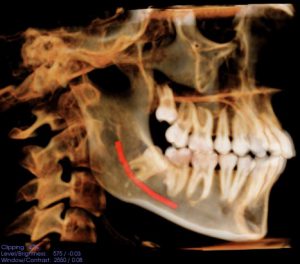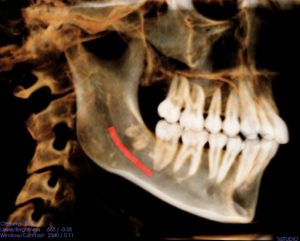One of the major risks of removing the lower wisdom teeth is injury to the inferior alveolar nerve (IAN). The risk of injury to the IAN ranges from 0.35% to 8.4% during wisdom teeth removal. This causes numbness to the patient’s lip and chin on the side of the injury. In majority of cases, the numbness is temporary and full feeling is regained over weeks to months. For higher risk situations, there is an alternative procedure known as coronectomy or partial odontectomy, which involves removing the crown (top part of the tooth) only and leaving the roots behind. This substantially minimizes the risk of a nerve injury.

The roots that are left behind can migrate over time. However, in only 3% of patients will this impair healing and require a second surgery for its removal. This second surgery is typically safer since the roots migrate away from the nerve.








